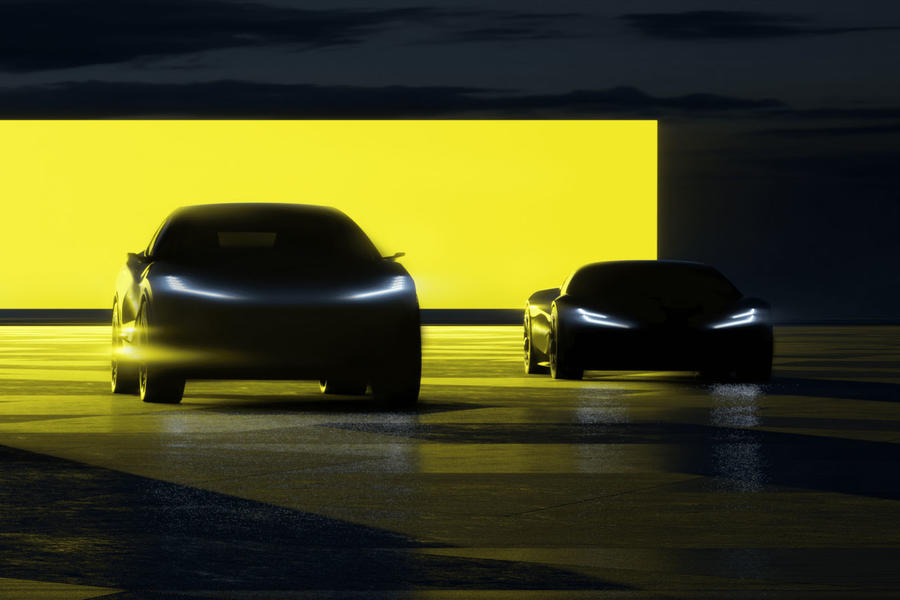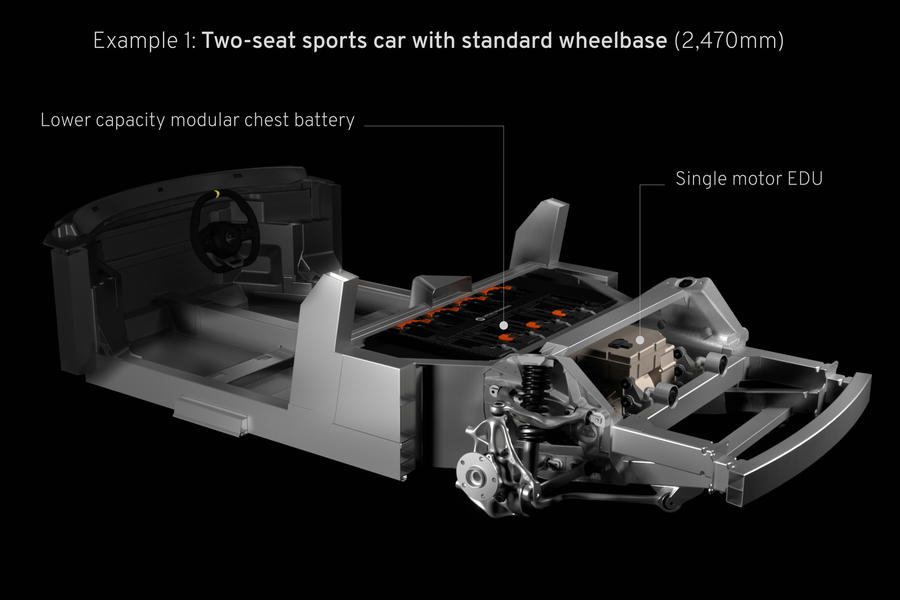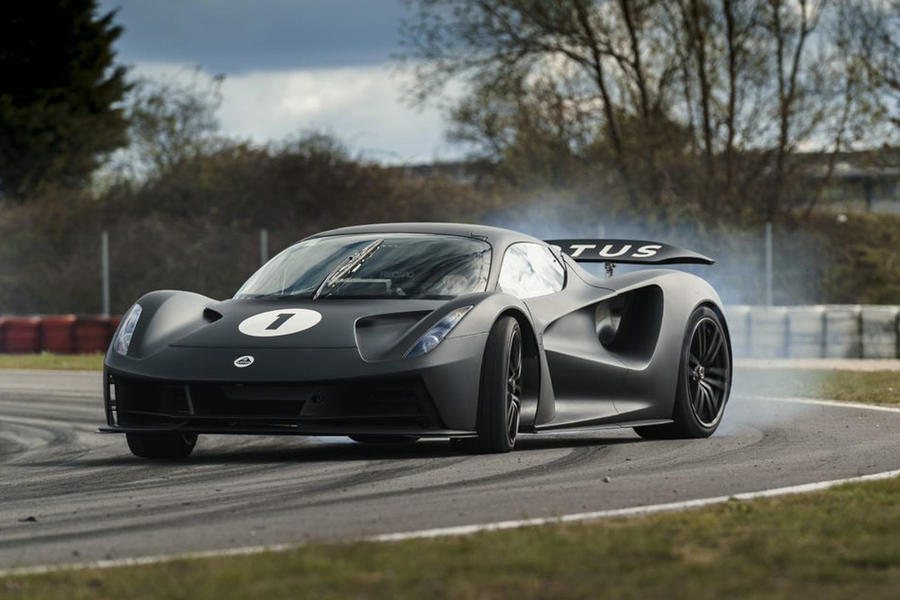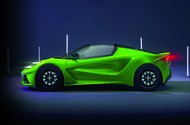Electric successor to the Elise will be built and developed in Hethel, Norfolk
Electric sports car – which will also replace the Emira – to have mid-engined-style platform
The electric successor to the Lotus Elise – due to go on sale in 2027 at around £75,000 – will be an “essential” part of the Lotus line-up, according to company bosses.
Codenamed Type 135, the new two-seat sports car will replace the Emira, the firm’s final combustion-engined car.
The new BEV will be developed and built in Hethel, Norfolk, and will be the fourth and final model of Lotus’s Vision80 project, following the Eletre large SUV, Emeya saloon and forthcoming Type 134 D-segment SUV.
Mike Johnstone, the Lotus Group’s chief commercial officer, told Autocar that meeting the Type 135’s target price was “key”.
He said: “It’s something that’s not a big step on from where we are at the moment, but we recognised that there’s going to be a lot of new technology. That’s an engineering challenge: it’s where we need to get to in the market. So our teams will need to work fastidiously to make sure we can get the price to that level.”
While the Type 135 will be a relatively small-volume car (Lotus is aiming for annual sales of 10,000-15,000, compared with 50,000 for the Eletre and 90,000 for the Type 134), Johnstone said it’s still a crucial model for the brand.

“We call it the bullseye,” he said. “At the very centre [of the brand] always has to be that lightweight sports car. That gives you the credibility to build other products that have sporty characteristics.
“We’re not naive enough to say that the Eletre is going to feel like an Elise. It won’t. But it has a lightweight feeling, and we think it’s the best-handling SUV you can drive.
“We need the bullseye of the brand, which has to be that two-seat sports car. Otherwise we’re just a brand with a Lotus badge. The sports car is an essential part of our future.”
Lotus had previously been developing a bespoke electric sports car platform in collaboration with Alpine, the Renault Group’s performance brand, but the two companies split last year.
However, Lotus chiefs insist that this hasn’t slowed development of the Type 135.
Lotus has put a major focus for its future growth on filling the ‘white space’ between what it sees as established performance brands and EV start-ups by emphasising both its 76-year-history and the advanced technology in its cars.

Ben Payne, the Lotus Group’s design chief, added that while the Type 135 would use a bespoke platform and be developed and built in Hethel and not Wuhan, China, with the other Lotus EVs, it would take technology learnings from them.
He said: “There’s a lot of learning that carries across, and as a sports car, it will have a lot more technology embedded in it than we’ve seen before from Lotus. The technology isn’t just about autonomous driving; it’s about safety features and answering customer expectations [too].
“You can expect that car to be a properly connected product. Will it have exactly the same technology as the other products? No, because that’s not appropriate to the sports car segment. It’s a different offer. But you will see really strong synergies.”
Lotus Type 135: Architecture and specifications

The Type 135 will be built around the dedicated Project LEVA (Lightweight Electric Vehicle Architecture) structure that was set to also underpin the Alpine A110 successor.
The new E-Sports platform, which incorportates LEVA, will give it a mid-engined-style layout, most likely with the battery pack stacked in the middle of the car, rather than under the floor, as is usual for EVs. That will allow the Porsche Boxster rival to sit lower and ensure weight distribution is more in keeping with its remit.
The E-Sports platform has yet to be revealed in its entirety, but the LEVA element is said to be 37% lighter than the equivalent structure used by the combustion-engined Emira sports car.
It has been designed from the ground up to compensate for the added weight of an electric powertrain and with a view to replicating the typical dynamic traits of previous Lotus models.
The batteries can either be stacked vertically behind the seats, in a layout reminiscent of a conventional mid-engined format, or arranged under the floor in longer-wheelbase cars with rear seats.
The LEVA unit will be mated to a bulkhead and front end completely unrelated to those used by the Emira, but managing director Matt Windle previously said he was keen for Lotus’s trademark dynamic agility to be carried over to the new models.
“It’s our DNA: dynamics, aerodynamics, lightweighting – that’s what we do on all our products,” Windle told Autocar at the LEVA’s unveiling. “We still want these to be Lotus products. They are going to have a different propulsion system but that system comes with benefits as well: instant torque, easier cooling and better packaging, so the first sports car [the Type 135] will have a lot of storage and packaging benefits as well.”
The E-Sports architecture will host single- and twin-motor powertrains ranging in output from 469bhp to 872bhp. This means the entry-level sports car will pack nearly double the power of even the most powerful iteration of the Elise, and more powerful versions could fill the gap left by the more track-focused Exige.
The E-Sports platform will accommodate rear- and four-wheel-drive powertrains from the off, although the conceptual applications previewed so far by Lotus all use a rear-mounted drive system. Windle told Autocar that Lotus does not “want to close off the possibility” of offering a similar torque- vectoring set-up to that found in the top-rung Evija, which will continue to serve as the brand’s halo model in the coming years in both a marketing and engineering sense. As a result, some of the Evija’s defining features will make their way into more mainstream Lotus sports cars.
One early hint is that the EV will be made as aero-efficient as possible with aerodynamic aids “running through the car”, in the vein of the Evija’s prominent Venturi tunnels, thereby taking advantage of the more compact nature of an EV drivetrain. However, the Type 135 will be far more accessible than the hypercar. Windle emphasised Lotus’s commitment to affordable performance and said “efficiencies” throughout the Geely group, which also includes Volvo, Polestar, Lynk&Co and LEVC, will allow Hethel to use components and systems from other brands to keep development and retail costs down.

The overarching priority for the Type 135 is to stay true to the company’s long-held reputation for lightweight, accessible performance. Windle said the stacked battery arrangement used for the Type 135 gives “the yaw control and stability that we’re used to setting cars up around” while enabling a “sports car feel”. Notably, Lotus used this arrangement for the first-generation Tesla Roadster, which had a wheelbase only 50mm longer than that of the Elise, on which it was loosely based.
This set-up also allows the driver to sit as close to the ground as possible, like in a petrol-engined Lotus sports car, whereas the underfloor batteries used in larger E-Sports-based cars will raise the seat height – and vehicle profile – by some 100mm.
But Lotus sports cars won’t sacrifice day-to-day usability in their pursuit of dynamic superiority. The smallest battery fitted to this platform will be a 66.4kWh unit, which could feasibly offer a range of around 300 miles in a lightweight, low-slung two-seater. The larger, 99.6kWh battery – also available in ‘slab’ or ‘chest’ format – could bump up the range to nearer 450 miles.
The architecture will also be equipped with 800V charging hardware to make it compatible with the fastest chargers on the market.
Windle was tight-lipped on the specifics of the other cars that will use the E-Sports architecture but emphasised that Lotus UK “should not be a single-model producer” and will build a line-up of distinct sporting models “in multiple segments in the market range”.
Not every retired model will necessarily be replaced, but the capacity for the platform to accommodate a rear-driven four-seater with a wheelbase of 2650mm paves the way for an electric successor to the Evora, too.
Additional reporting by Felix Page
Source: Autocar
